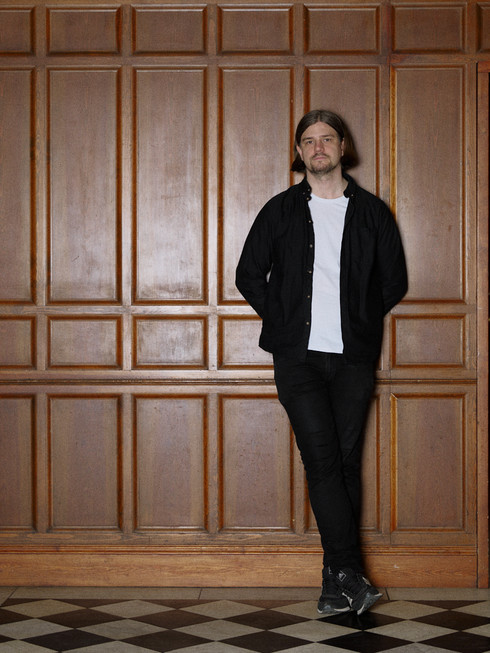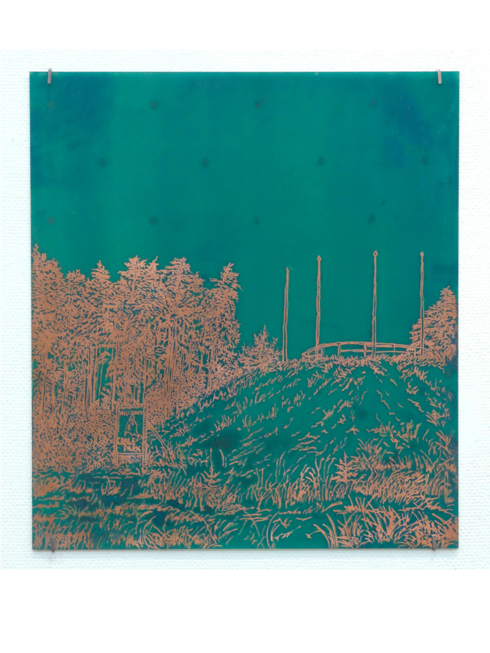Linus Höj Krantz: "Finding Loopholes in a Medium with Set Rules"
Written by Natalia MunteanBlending alchemical experimentation with graphic art and craftsmanship, Linus Höj Krantz, born in 1989 in Skärholmen, Sweden, is an artist whose works explore themes of cycles, escapism, and environmental disruptions, often integrating unconventional techniques with traditional methods. In his latest project, Linus draws inspiration from Arlanda Airport, transforming its logistics and design elements into etched circuit boards, copper engravings, and sculptural objects that connect history with modernity.
Discover more about the artist’s innovative approach to printmaking, the impact of being one of the four receivers of the 2024 Ann-Margret Lindell Stipendium, and the importance of creating a dialogue between art and the unnoticed systems that shape our world.
Natalia Muntean: Your interest in unconventional methods of printmaking sets you apart. What draws you to challenge traditional boundaries in this medium?
Linus Höj Krant: I think perhaps the way I work around these boundaries has a lot to do with my personality. I enjoy haphazardness and a tiny bit of chaoticness, at the same time I crave boundaries and templates. Finding loopholes or possibilities to tweak a medium that has long-set rules and archetypes is just something that suits having that type of mindset. Also, I think it´s a medium that has a lot of potential to conversate with the present and its ways of transmitting images and information.
NM: Your work often combines experimental techniques with traditional printmaking. How do you decide which techniques to integrate into a new project?
LHK: Accumulating techniques and finding out what works is a long and slow process, I would say. I might pick up a seed of a technique while working on a current project. Then a concept or a site or something that whispers to this technique gets added to the back of my brain and eventually, it becomes the foundation towards new work. For the last ten years, I´ve been travelling a lot by bus and train within the Nordic countries, partially because of studying in Norway, Denmark and Sweden. These constant journeys have made me subconsciously and consciously merge landscapes, energy and logistics with techniques such as electrolytic printmaking, circuit boards and sculpting found material/metal. Usually, I start a project with too many ideas, and as the project develops, I scratch and peel off what doesn´t need to be in it.
NM: What does receiving this scholarship mean for you, both personally and professionally, and how do you see it shaping your future as an artist?
LHK: I think it means more than a lot. It´s a great encouragement to continue to try new and unwritten paths within my artistic process. Hopefully, it will bring more flexibility for me to spend longer periods on research and grinding new techniques.
NM: The stipend celebrates excellence in graphic art. What do you think makes your approach to graphic art unique, and how does it align with the values of this award?
LHK: I guess what sets me apart could be that I´m very curious about how rare methods and artistic processes can have a dialogue with what surrounds us but often go unnoticed. Having your antennas both inside the box and outside of it, I guess resonates a lot with the ideas and core values of this incredible grant.





